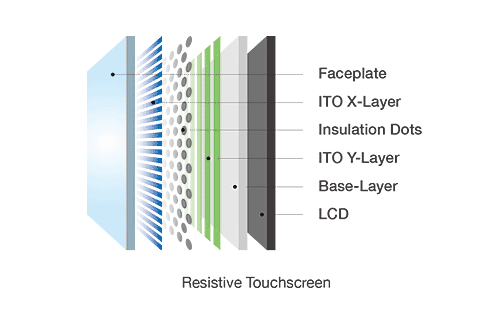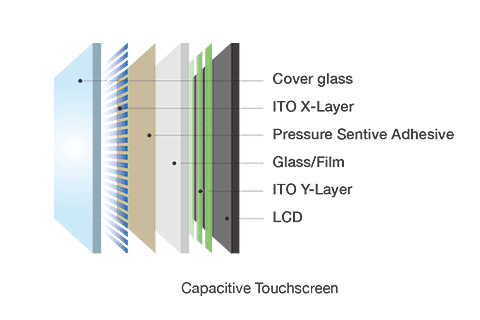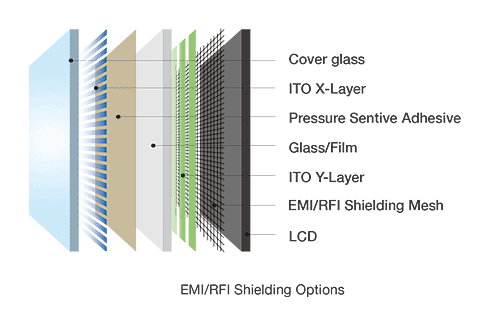Touchscreen is not only a part of the display system, it also becomes the primary input device as well. Bifa provides various capacitive and resistive technologies to formulate different types of touch panels as needed.
A resistive touchscreen comprises two layers of conductive ITO (indium tin oxide) film and ITO glass separated by transparent dot spacers. The resistive touch panel features thin, light, and lower power consumption.
Also, it is pressure sensitive to have highly accurate and quick response to any input device, including finger, glove, stylus or pen.
The resistive touchscreen constructs reliable and affordable solutions for restaurants, factories and hospitals due to high resistance to dust, oil, liquids and contaminants.

A capacitive type touchscreen consists of one layer of insulation glass, coated with transparent and conductive indium tin oxide (ITO) on both surfaces.
The capacitive touch displays rely on the electrical change caused by a light touch of a finger, capacitive stylus, or electric conductive glove.
The capacitive screens feature more sensitive and accurate touch performance as glass technology advances. The advancement also leads to sharper and brighter display performance for the capacitive screens.

EMI (Electromagnetic Interference) is electrical or radio frequency noise that could possibly cause systems inaccuracy or malfunction, and result in unexpected errors. To protect sensitive devices and operations from interference noise, Bifa provides also EMI filter option for custom touch sensors.
Bifa offers EMI shielded touch sensors by adding a layer of conductive optical fine wire mesh into the touch sensors. As the EMI/RFI shielding mesh can reduce noise but also decrease the light transmission, the mesh pitch can be customized to meet required shielding and transmittance.

Projected Capacitive Touchscreens (PCT) provide multi-touch and highly accurate functionality with a matrix of conductive wires.
The PCTs are widely installed in the most demanding devices like medical machines, smartphones, and tablet computers with pinpoint accuracy in tracking motions of the fingers over the screen.
